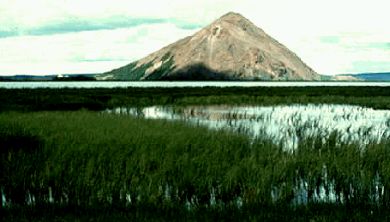Question
What rocks are found almost exclusively in Iceland or possess qualities unique to Iceland?
Asked By
Kristján Heiðar Jóhannsson
Answer
Igneous rocks are classified on the basis of two independent variables, the chemical composition of the magma from which they crystallised, and the external conditions of crystallisation - fast or slow, at the Earth’s surface, in water, or deep within the Earth. Chemically, rocks in Iceland reflect their origin at a hot spot in the middle of the ocean. Another such hot spot - they are 25-30 in all - is Hawaii in the Pacific Ocean which is characterised by many of the same types of rock as Iceland. There is, however, one interesting exception: silicic rocks (dacite and rhyolite) are much more common in Iceland than in Hawaii, where such rocks are almost totally absent, and in fact Iceland is probably quite unique among oceanic islands in this respect. Chemically, therefore, Icelandic rocks are similar to those of other oceanic islands - and some continental basalt regions, too - but the ratios of the different rocks are in some ways unusual in Iceland: by far the greatest volume is basalt (90%), then come silicic rocks (rhyolite and dacite, 6-10%), whereas intermediate rocks (called icelandite!) are relatively scarce. Lately, geologists are paying increased attention to the Palagonite Formation in Iceland, partly because similar formations apparently exist on the planet Mars. The palagonite is mostly formed as hyaloclastite (loose, glassy material) in subglacial eruptions.
Um þessa spurningu
Dagsetning
Published 6.3.2005
Category:
Keywords
Citation
Sigurður Steinþórsson. „What rocks are found almost exclusively in Iceland or possess qualities unique to Iceland?“. The Icelandic Web of Science 6.3.2005. http://why.is/svar.php?id=4806. (Skoðað 5.1.2026).
Author
Sigurður Steinþórssonprófessor emeritus



